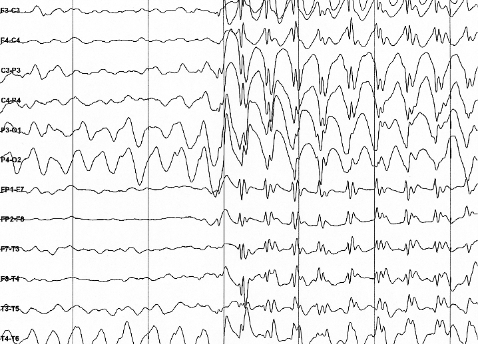Dravet Syndrome: A Comprehensive Overview
Dravet syndrome is a rare but severe form of epilepsy that begins in infancy. Characterized by prolonged and frequent seizures, this condition can significantly impact cognitive and motor development. Understanding Dravet syndrome is crucial for early intervention and better management. This guide provides an in-depth look at its causes, symptoms, diagnosis, treatment, and prognosis.
NEUROLOGY
Rishwin A R
2/10/20252 min read


Causes
Dravet syndrome is primarily caused by mutations in the SCN1A gene, which plays a crucial role in regulating sodium channels in the brain. This mutation disrupts normal neuronal activity, leading to seizures and other neurological symptoms. While most cases occur sporadically, some may be inherited in an autosomal dominant pattern.
Symptoms
Symptoms of Dravet syndrome typically appear in the first year of life and progressively worsen over time. Key symptoms include:
Prolonged seizures (lasting more than 5 minutes) triggered by fever, warm temperatures, or flashing lights.
Multiple seizure types, including febrile seizures, myoclonic seizures, and absence seizures.
Developmental delays that become more noticeable after the first year.
Poor motor coordination (ataxia) and difficulty walking.
Speech and language difficulties.
Behavioral issues, such as hyperactivity and autistic-like tendencies.
Diagnosis
Diagnosing Dravet syndrome involves a combination of clinical assessment and genetic testing. The process includes:
Medical History & Symptom Evaluation – Doctors assess seizure patterns, triggers, and development history.
Electroencephalogram (EEG) – To analyze brain wave activity during seizures.
Genetic Testing – To identify SCN1A mutations.
MRI Scans – To rule out other neurological disorders.
Treatment Options
While there is no cure for Dravet syndrome, treatment focuses on seizure management and improving quality of life.
Medications
Antiepileptic drugs (AEDs): Common choices include stiripentol, clobazam, and valproate.
Cannabidiol (CBD) oil: FDA-approved for Dravet syndrome (Epidiolex).
Fenfluramine: Recently approved for reducing seizure frequency.
Lifestyle & Supportive Therapies
Ketogenic diet – A high-fat, low-carb diet that helps reduce seizure frequency.
Physical therapy – Helps improve motor coordination and muscle strength.
Speech and occupational therapy – Supports language development and daily activities.
Avoiding Triggers
Managing fevers promptly to prevent febrile seizures.
Avoiding bright, flashing lights that can trigger episodes.
Regulating temperature to prevent heat-related seizures.
Prognosis
Dravet syndrome is a lifelong condition, but early diagnosis and tailored treatment can improve outcomes. Many individuals require lifelong care, with varying degrees of independence. Seizures may become less frequent with age, but cognitive and motor challenges often persist.
FAQs
1. Can Dravet syndrome be cured?
No, but treatment can help manage seizures and improve quality of life.
2. Is Dravet syndrome hereditary?
Most cases occur due to spontaneous mutations in the SCN1A gene, though some can be inherited.
3. What is the life expectancy of someone with Dravet syndrome?
While life expectancy varies, the risk of sudden unexpected death in epilepsy (SUDEP) is higher, making careful management crucial.
4. How is Dravet syndrome different from other epilepsy types?
It presents with prolonged, drug-resistant seizures, developmental delays, and a known genetic cause.
5. Can a child with Dravet syndrome live a normal life?
With proper medical care, supportive therapies, and trigger management, individuals can lead fulfilling lives, though challenges remain.
Image Credit: "Spike-waves.png" by Steven Fruitsmaak, licensed under CC BY-SA 3.0, via Wikimedia Commons.
Syndromes.xyz
Explore medical syndromes and their details here.
For Educational purposes only
The information on this site is not in any way, replacement for professional advice. Always consult your physician regarding personal queries
Connect
Support
syndromesxyz@gmail.com
© 2024. All rights reserved.
